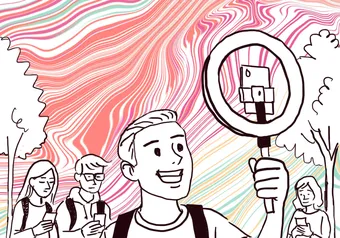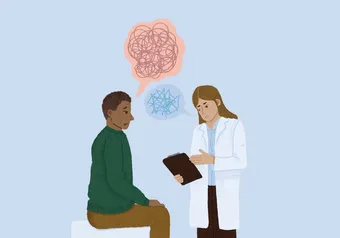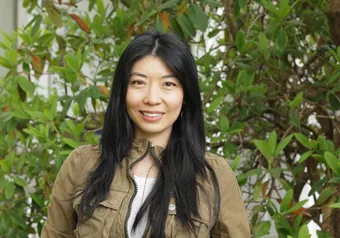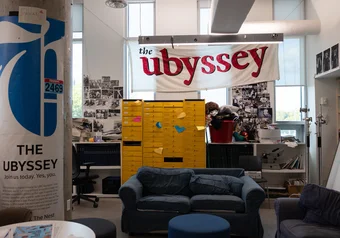Content warning: This article references substance use and drug overdose.
It’s been 18 months since you were at your last party. It’s the weekend before school starts and for the first time in a long time, things feel normal. Or at least as close to normal as they can get.
You’re with your friends having a good time — you think that nothing can go wrong. It never has before. You’re invincible.
But this week is different. Your friend stops breathing. They’re overdosing. What do you do?
Students have been awaiting the return to in-person classes, campus activities and, let’s be honest, parties since March 2020. But since then, the toxic drug crisis has not disappeared because of COVID-19 — it’s actually worsened. Vancouver’s street drug supply has become more contaminated with fentanyl, a highly potent synthetic opioid.
“Vancouver’s drug supply is really adulterated and it only got worse during the pandemic. This can really create risks for students because you might not know exactly what you’re taking [and] the potency of drugs you take,” said Samara Mayer, a UBC PhD student and the chair of the Vancouver Chapter of Canadian Students for Sensible Drug Policy (CSSDP).
Fentanyl is the drug often blamed for the toxic drug crisis. Fentanyl is a highly potent synthetic opioid that is prescribed by doctors for pain relief. But occasionally it is combined with other illicit substances such as cocaine, ketamine and other powder drugs as it tends to be cheaper.
But the toxic drug crisis is not UBC’s top priority in terms of student safety in residences.
“COVID and alcohol [consumption] are the two things that [Student Housing and Community Services (SHCS)] has a stronger focus on. Not to say that [illicit drug] consumption is not on our radar. It certainly is, but it is probably third in terms of our levels of concern,” said Andrew Parr, associate vice-president of SHCS.
With the return to normalcy, illicit drugs will find their way on campus. Students who haven’t used substances during the pandemic may no longer be in the habit of carrying naloxone, testing their substances or maintaining their tolerance. And, advocates say UBC seems to be lacking in services for students.
A case of comfort
UBC’s hands-off approach to helping students navigate the overdose crisis is evident in on-campus housing.
Alex, a Totem Park residence advisor (RA) during the academic year of 2019/20, made their way to Shoppers Drug Mart to obtain a naloxone kit following their RA orientation. Alex’s name has been changed to protect their identity.
“We were given a brief presentation in our advisor orientation of what it looks like when someone is overdosing,” said Alex. “We’re always told to call 911 for emergencies and in terms of administering naloxone, it was always if you felt comfortable.”
Naloxone is a medication used to temporarily reverse the impacts of a drug overdose. Even when naloxone is used, 911 must still be called.
Residence advisors, according to Alex, were not provided with mandatory naloxone training or a naloxone kit. Alex had to obtain harm prevention training and tools by themself with no help from UBC SHCS. Naloxone is provided by SHCS at the front desks of student residences but you must prove you are overdosing or at risk of overdosing to gain access.
“There’s already a lot of stigma that comes with drug use. So when you’re creating questions that need to be answered in order to access services, that might create a barrier,” said Mayer.
Mayer said that students should be able to access services completely anonymously and that there should be options for them to be provided by peers. Though RAs are students and could be viewed as peers, SCHS does not require them to administer naloxone.
“We don’t make [administering naloxone] mandatory for our RAs because the expectation is not that they become the administerer of naloxone, but it’s actually there for the community to use,” said Parr in an interview with The Ubyssey.
Residence advisors are now required to go through harm reduction training but this does not include naloxone training, according to Parr.
Parr is more concerned about students using illicit substances outside of student accommodations than within residences.
“Where things do concern me a bit is not so much the parties within residence but the parties in — and I don’t mean to put them in bad light — with the parties that sometimes occur in the fraternity village,” said Parr.
Parr highlighted that SHCS is working towards creating a community that allows residents to feel comfortable speaking to their residence advisors and life managers. But Alex thinks strong rules around substance use in the residence contract increase the stigma around illicit drugs which can prevent residents from communicating about substance use.
“There is a certain amount of hesitation people have in telling their RA, ‘Oh, I’m doing this drug’ because they don’t want to be written up for having paraphernalia in their room,” said Alex.
But it’s not just RAs that are being left in the dark. The student residents are, too.
“I remember reading [in Connect magazine — an SHCS magazine included in the move-in packages of students in residence], as a first year, things about drugs, overdosing and the fentanyl crisis, but there really isn’t that much information given to residents about [harm reduction],” said Alex.
An epidemic worsened by a pandemic
In 2020, an average of 144 people died a month from an overdose in BC. From January 2021 to May 2021, the average went up to 170 people a month. The BC Coroners Service reported that 85 per cent of illicit drugs that led to deaths in 2021 contained fentanyl — meaning on average about 144 people per month died of overdoses caused by fentanyl in 2021.
“The addition of fentanyl to drugs, specifically when the person taking the drugs doesn’t know fentanyl has been added, can be harmful because you don’t know the strength or the composition of the substance you are consuming,” said Mayer.
In March 2020, there were 112 deaths. In March 2021, there were 166 deaths — making it clear COVID-19 has had an impact.
Fifteen per cent of overdose deaths in 2021 so far were people between the ages of 19 and 29.
“It’s this combination of low or no tolerance, being back at school [and the] increasingly adulterated drugs supply that can create some risks for students,” said Mayer.
Risks for students are rampant when it comes to substance use, whether that’s health or educational risks like receiving academic repercussions due to your substance use.
Presently, CSSDP Vancouver is working with CSSDP Okanagan to establish a medical amnesty policy at both of UBC’s campuses — which does not currently exist.
A medical amnesty policy, as explained by Mayer, is like the Good Samaritan Drug Overdose Act. “This would ensure students don’t face academic or institutional repercussions [for substance use] and they seek help during emergencies related to drug use,” said Mayer.
In a statement to The Ubyssey, Matthew Ramsey, director of university affairs at UBC Media Relations, outlined that the Student Health and Wellbeing team leads campus substance use, health and safety and harm reduction initiatives for the student body.
These programs are continuously evaluated for their effectiveness because “the dangers of substance use and overdose are clear,” said Ramsey. When The Ubyssey asked who evaluated UBC’s substance programs and policies, Ramsey did not provide an answer.
When asked if UBC is doing enough to promote safe use and prevent overdose on campus, Mayer kept it short: “No. I don’t think that enough has been done.”
‘You have the right to safety on your campus.’
Though UBC doesn’t have infrastructure that allows peer-to-peer naloxone and harm reduction training, the AMS does.
AMS Peer Support, the result of a merger of AMS Vice and Speakeasy, offers free harm reduction workshops for UBC students, groups and community members. But the AMS is trying to do more to keep students safe.
Saad Shoaib, AMS VP external, is currently working alongside Eshana Bhangu, the AMS VP academic and university affairs, and student services, to create a harm reduction campaign for this upcoming fall.
As VP External it is Shoaib’s job to lobby the government to make policy changes in the student interest — this includes policies around the toxic drug crisis.
“Students and young people are going to be taking part in large-scale gatherings and party scenes, so as a result, [the AMS is] going to continue to work with all the stakeholders that we can work with to ensure that the concerns around the toxic drug supply are being voiced and acted upon in an appropriate manner,” said Shoaib during an interview with The Ubyssey. Stakeholders include the provincial government.
As of April 2021, the provincial government has budgeted $330 million for treatment and recovery services for people who use substances. Of that $330 million, $152 million is dedicated to the overdose crisis.
“We think that the province should definitely increase its funding towards overdose prevention and harm reduction initiatives,” said Shoaib. “For us, it’s essential that … not only UBC, not only just the affiliated colleges, but that post-secondary institutions across BC provide students with access to naloxone kits.”
When asked about the resurgence of the UBC party scene and Greek life, Shoaib expressed that his portfolio would work with all campus groups and AMS members to ensure access to naloxone kits. He did not provide a timeline.
“I think that for us it’s making sure that all students have that access to the right resources and education when it comes to overdose prevention and harm reduction,” said Shoaib.
Noah Jassmann, the current president of the Interfraternity Council (IFC) is also concerned about the amount of educational resources provided to students.
“Our largest concern would be that there may not be enough educational programs available [at UBC] to deter people from using illegal substances, or how to use them as safe[ly] as possible,” said Jassmann.
The IFC holds an annual naloxone training session that is mandatory for the health and safety executives of UBC Fraternities. This training is optional for the rest of the fraternity community.
Besides the naloxone training, the IFC is planning to implement educational programs on substance use for new members.
“Although the ideal solution would be to have nobody using illegal substances, we recognize that some people make this choice. As a result, the IFC is taking many steps in order to ensure we do our part in educating our community on substance use,” Jassmann wrote in a statement to The Ubyssey. However, Jassmann did not specify what steps the IFC has been taking.
Jassmann said that the IFC does see that the AMS and UBC do provide some resources, such as workshops, AMS Peer Support and free naloxone in residence, but he does think there could be improvements.
In response, Shoaib said, “In terms of improvement, we’re going to be focusing on advocacy. The AMS is going to continue to make sure that our province is working towards providing students with the right resources and the right type of education on harm reduction and overdose prevention.”
In terms of specific action from the AMS outside of advocacy, Bhangu announced at the August 25 AMS Council meeting that the society is trying to get fentanyl testing strips on campus. She also said the AMS has been meeting with external bodies on bringing more fulsome drug testing to campus. Bhangu said the university expressed interest in a drug testing site but lacked the capacity to bring one to campus for September.
“We’re dedicating a lot of our capacity towards making sure that this return to campus is done in a safe and swift manner. We think that this is something that is not only just important to us but to every single student. As any student, you have the right to safety on your campus,” said Shoaib.
Safety when left to your own devices
Testing your substances is integral to ensuring your safety.
According to the Government of Canada, only a few grains of fentanyl can be enough to cause an overdose.
The nearest drug checking facility to the UBC Vancouver campus is on East Hastings street and at the Insite supervised consumption site run by Vancouver Coastal Health (VCH). Spectrometer drug checking, clean injection equipment, injection booths and professional medical staff are available on site.
Fentanyl testing strips are also available at Insite and at other supervised consumption sites across the Lower Mainland. Test strips cannot detect all types of fentanyl, like carfentanil. Even if your test comes back negative for fentanyl, VCH recommends carrying naloxone and to never use substances alone.
To learn more about how to recognize and prevent an overdose, visit VCH’s website.
Naloxone saves lives
One day, naloxone could save your life.
So, this week’s party didn’t go as planned. Your friend stopped breathing. They were overdosing. What did you do?
You called 911, administered naloxone and waited with your friend until help arrived.
The Good Samaritan Drug Overdose Act provided you with legal protection from charges for possession of a controlled substance because you called for help.
Since you reacted quickly and called for help, both you and your friend are okay.
First online
Share this article








